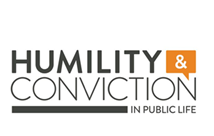What we’ve got here is failure to communicate
19 June 2017
Debate is a social process of interactive communication. We can distinguish at least four roles associated with parties to a debate. First, there are the debaters themselves — at least two of them, but possibly more. Second, there is the moderator of the debate. Third, there are the partisan audiences affiliated with each debater. Fourth, there is the unaffiliated audience. In a typical two-sided debate, each debater attempts to rally their partisans, sway the unaffiliated, stymie their opponent, demoralize their opponent’s partisans, and manage the moderator. Note that none of this has to do with establishing claims based on evidence or transmitting knowledge. Debate only leads to these epistemic consequences when it is well-structured and enough participants play by the rules.
In my research on public discourse, I aim to map and evaluate the structure of the networks involved in debates. I’ve chosen to focus on debates about controversial topics such as religiously-motivated violence, gay marriage, vaccination, genetically modified organisms, police brutality, income inequality, sexual harassment and assault, and abortion. Together with my team of computer scientists, data scientists, and philosophers, I am in the process of downloading posts on various social media networks related to these topics. Our plan is then to map, visualize, and analyze the networks of engagement associated with each controversy on each platform. For example, on Twitter we pay attention to replies, mentions, and retweets of tweets about the controversies. On Reddit, we pay attention to replies, up-votes, down-votes, and so on.
The idea behind this project is that different networks are liable to emerge from platforms with different functionalities and user populations. Epistemically fruitful debate should therefore be more likely on some platforms about some controversial topics than on other platforms and about other controversial topics. While the project is exploratory, we have some hunches about some network features that should make a difference. When it comes to the location of particular nodes in the network (i.e., accounts and the users behind them), we have several specific expectations. First, nodes that receive their information third-, fourth-, and fifth-hand are in less safe epistemic positions. They’re liable to accept hearsay. Second, nodes that receive their information from multiple independent sources are more likely to arrive at an epistemically defensible position. Third, nodes that transmit to multiple receivers that don’t communicate with each other enjoy enhanced rhetorical power, both as primary sources and as conduits of information.
In the figure below, you can see an example of the third point. The two networks pictured are identical. On the left, you see the result of an iterated communication process starting with the node at the hub of the left portion of the graph. On the right, you see the result of the same number of iterations starting with the node at the hub of the right portion of the graph. The darker the node, the more convinced it is. As you can see, the node on the left has much more power to infect the network with its message than the node on the right. This is due solely to the structure of the network and the position each node occupies within it.

Whereas these fairly small graphs are based on simulated data, the graphs we are planning to build based on real data are going to be massive, containing thousands of nodes and tens of thousands of connections. They should enable us to track epistemic and rhetorical processes online, and will serve as food for thought in the social epistemology of communication networks.
Image by Skeeze is licensed under CC0.
Mark Alfano is Associate Professor/Professor at Delft University of Technology/Australian Catholic University. Find out more about his work at www.alfanophilosophy.com.
- October 2025
- September 2025
- August 2025
- July 2025
- June 2025
- May 2025
- April 2025
- March 2025
- February 2025
- January 2025
- December 2024
- November 2024
- October 2024
- September 2024
- August 2024
- July 2024
- June 2024
- May 2024
- April 2024
- March 2024
- February 2024
- January 2024
- December 2023
- November 2023
- October 2023
- September 2023
- August 2023
- July 2023
- June 2023
- May 2023
- April 2023
- March 2023
- February 2023
- January 2023
- December 2022
- November 2022
- October 2022
- September 2022
- August 2022
- July 2022
- June 2022
- May 2022
- April 2022
- March 2022
- February 2022
- January 2022
- December 2021
- November 2021
- October 2021
- September 2021
- August 2021
- July 2021
- June 2021
- May 2021
- April 2021
- March 2021
- February 2021
- January 2021
- December 2020
- November 2020
- October 2020
- September 2020
- August 2020
- July 2020
- June 2020
- May 2020
- April 2020
- March 2020
- February 2020
- January 2020
- December 2019
- November 2019
- October 2019
- September 2019
- August 2019
- July 2019
- June 2019
- May 2019
- April 2019
- March 2019
- February 2019
- January 2019
- December 2018
- November 2018
- October 2018
- September 2018
- August 2018
- July 2018
- June 2018
- May 2018
- April 2018
- March 2018
- February 2018
- January 2018
- December 2017
- November 2017
- October 2017
- September 2017
- August 2017
- July 2017
- June 2017
- May 2017

